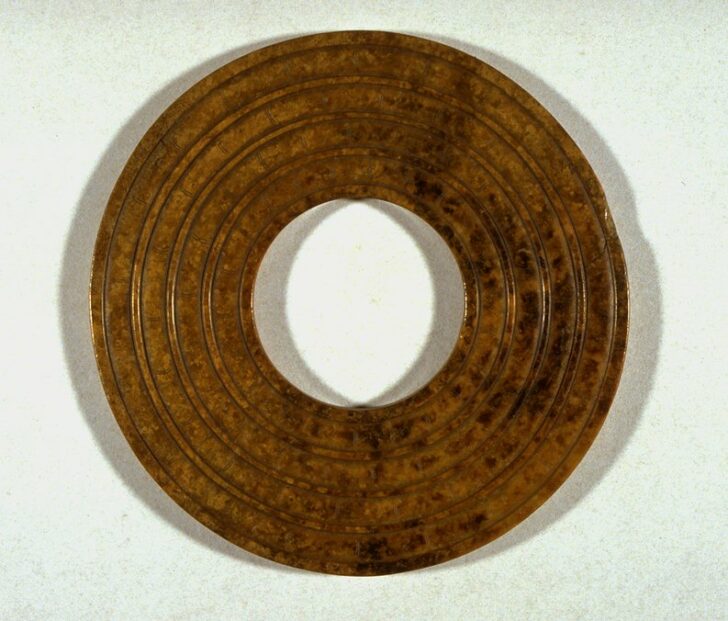Bi Disk
Chinese

Description
Subject Matter:
The “bi” disk originated among China’s Liangzhu culture around 3,000-2,500 B.C.E. The function and meaning of these disks are unknown. As late as the Han dynasty (206 B.C.–A.D. 220), jade disks performed a ritual function in aristocratic burials, where they were placed above the head, below the feet, and on the chest of the deceased. They were also depicted on painted burial shrouds of the second century B.C. In these paintings two dragons thread their way through a jade disk, going on their way from the nether world to the celestial realm. This suggests that jade disks may have been intended to help the deceased's soul in its journey to heaven. Although it is not certain that the disks functioned in this way in Neolithic times, the enormous labor involved in perfecting their abstract shape and lustrous finish is striking testimony to the reverence accorded them and their importance as a ceremonial object.
Usage Rights:
If you are interested in using an image for a publication, please visit https://umma.umich.edu/request-image/ for more information and to fill out the online Image Rights and Reproductions Request Form.